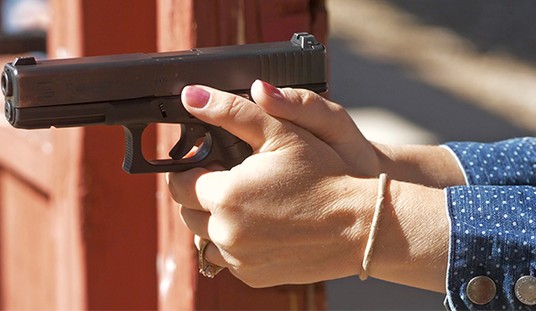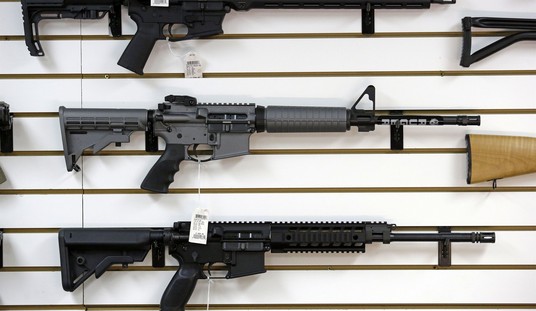 The Smith & Wesson J-frame has remained largely unchanged for more than 60 years—until now. At the 2010 SHOT Show, Smith & Wesson unveiled a new, state-of-the-art small frame revolver for personal protection: the Bodyguard 38.
The Smith & Wesson J-frame has remained largely unchanged for more than 60 years—until now. At the 2010 SHOT Show, Smith & Wesson unveiled a new, state-of-the-art small frame revolver for personal protection: the Bodyguard 38.
The “Bodyguard” name has been around for a long time, and in the past referred to a shrouded hammer revolver—but not anymore. The new Bodyguard 38 is a double-action only design with a completely internal hammer, similar to what S&W had previously called a “Centennial” design. The change in the meaning of the term “Bodyguard” is somewhat confusing to S&W diehards, but perhaps this new revolver and a new Bodyguard .380 pistol that shares the same name, will redefine the term going forward.
Gun details
In some ways, the Bodyguard 38 is a typical small frame, five-shot, snubnose revolver with an internal hammer. This style of revolver has been an icon of personal defense guns for decades. Smith and Wesson, however, has modernized the snubnose in a number of ways.
Perhaps most interestingly, the Bodyguard is built on a one-piece aluminum alloy frame attached to a steel reinforced polymer grip frame. Polymer grip frames are the latest trend in revolver design, and for good reason. Polymer is lightweight, inexpensive, non-corrosive, and has excellent recoil reduction characteristics.
The Bodyguard also features a laser sight integrated with the revolver frame. The Insight brand laser is fully adjustable for elevation and windage, and is activated with a push-button near the top strap. The laser cycles through each of its three stages (off, constant on, and pulsing on) with each press of the button. The high position of the laser emitter puts the laser beam closely in line with the barrel, and far from the shooter’s trigger finger. Unlike some other laser configurations, the trigger finger will never block the laser, even when indexed along the revolver’s frame.
Another innovative feature is the placement of the cylinder release latch on the rear portion of the top strap. Opening the cylinder is an ambidextrous operation because the latch can be operated with the thumb of the shooting hand—whether the left hand or the right hand. However, the lever can still be pushed from the left side of the gun if desired.
Finally, the revolver is fitted with very slim, synthetic one-piece stocks. The feel is quite thinner than traditional revolver stocks, but still fit my large hands well. Most importantly, the grip design encourages the preferred revolver grip—high on the back strap. A high grip helps reduce both perceived recoil and muzzle flip.
Carry impressions
The ease of carry of small revolvers is well known. Many people choose snubby revolvers for this very reason. The Bodyguard is well suited for many modes of carry. While the gun could certainly be carried on the belt in a traditional manner, its small size is also very conducive to deeper concealment—such as pocket carry, ankle carry, or even in a belly band.
The Bodyguard 38’s slick exterior is well designed for any mode of carry. The revolver is nicely rounded and lacks any sharp edges. There is no serrated cylinder latch or external hammer to irritate the skin or catch on the draw. The synthetic rubber stocks are not so sticky that they will print through a cover garment or foul your draw. All in all, the Bodyguard is easy to carry and easy to conceal, as you would expect from Smith & Wesson.
Shooting Impressions
Shooting the Bodyguard was a pleasant surprise. Snubby revolvers can be notoriously unpleasant to shoot, especially with full power defensive ammo. The light weight and small grips are not ideal for shooting. However, a number of Smith & Wesson’s design features have really helped to tame this snubby. The recoil-absorbing properties of the polymer frame, together with the high grip position make the Bodyguard much more controllable than the average lightweight snubby. Shooting standard pressure .38 Special ammunition is quite pleasant and even hot +P loads are very tolerable. A number of people at the range agreed that the perceived recoil and muzzle flip of the Bodyguard was less than a standard aluminum alloy J-frame revolver.
The fixed sights are quite good, with a good-sized rear notch and serrated front ramp. However, the very short sight radius of the fixed sights on a snubby revolver is one of the reasons it’s difficult to shoot well. S&W has compensated for this inherent shortcoming with an alternative sighting system—the laser sight. The many advantages of a laser sight are too lengthy to discuss in this article, and have been covered many times. However, a laser sight allows the shooter to focus on the target, and to shoot from awkward positions (where aligning the target, sights and eye is impossible)—all potentially important skills in a defensive situation.
My only complaint with this gun, however, is with the laser unit. While the laser functions very well, I do not care for the switching. Activation of the laser must be done with the thumb of either the shooting hand or the weak hand. As a result, there is no momentary switching. Cycling the laser through its various modes is a bit awkward and time consuming. I would much prefer a grip-integrated momentary switch, but I believe that technology is patented. Learning to efficiently activate and de-activate the laser will have to be addressed in practice and training.
The trigger on the Bodyguard is better than the average small revolver. The roughly eight-pound trigger pull stacks at the beginning, but then pulls smoothly to a clean break. The trigger feels lighter than eight pounds, and is quite manageable.
Perhaps the most controversial feature on the new Bodyguard will be the non-traditional cylinder release latch on the top of the gun, as opposed to the left side of the frame. I actually found the cylinder release position to be very effective, even for a right-handed shooter. The large slide-type release is an easy gross motor movement under stress. This configuration is especially desirable if you keep the revolver in your strong hand for loading (such as the method taught by Michael de Bethencourt) because the strong hand thumb goes to the top strap as part of the technique. Any shooter who is willing to be open-minded may actually find this setup preferable over the traditional side-mounted cylinder release latch.
Final thoughts
The Bodyguard 38 is a new twist on the J-frame revolver. S&W addressed the most serious shortcomings of the traditional snubby by incorporating modern materials and design. Perhaps even more importantly, S&W remained focused on delivering a great value, by offering a laser equipped lightweight revolver at an MSRP of only $625. Street prices should be around $550 or slightly less, once the initial demand is satisfied. Each Bodyguard comes with a black nylon zippered case suitable for off-body concealed carry, and every gun is backed by S&W’s lifetime warranty.
The Bodyguard 38 represents a modern overhaul of the classic J-frame carry gun. I would also love to see Smith & Wesson offer a model without the integrated laser, at an even lower price point.
Editor’s Note
The United States Concealed Carry Association is THE association for personal defense. Take advantage of their free newsletter by clicking here. ~Mike P.








Join the conversation as a VIP Member